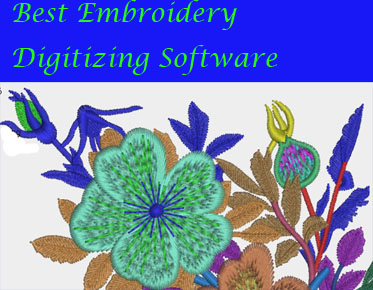9 Tips from Eagle Digitizing for Maintaining Thread Tensions
Thread tension is one of the most frustrating themes in the digitizing embroidery world. Learning to adjust and maintain good thread tension is a learned skill. Once you have mastered this skill, it will have great impact on your embroidery. The following tips will help you keep the right amount of tension on your machine, which leads to better quality results.
The design usually looks much better if the tension is adjusted correctly only on the machine. Wrong tension will lead to many problems. If you do not understand the basic knowledge of the relationship between the top line and the bottom line, you cannot know how to correct them.
When the needle with upper thread goes
down through the needle hole on the needle plate and connects with the lower
thread, a coil is formed. Form a ring directly behind the eye of the needle.
When the needle is back up, the thread will be tightened if your tension
setting is correct. If one of the wires is too tight, it may break. If the edge
of the needle hole on the needle plate has burrs, it may crack or wear when the
thread picks up. It is important to maintain the overall balance between the
top line (top line) and the bottom line (bottom line).
Here are some tips to help you keep the line tension balanced
Avoid switching thread types
Check the tension when changing the
thread color.
Check the tension of different types
of fabrics
Avoid Bird's Nest
Avoid unstable sutures and broken
threads
Check the tension when replacing the
bobbin
Clean the shuttle housing every time
the shuttle core is replaced
Keep the tensioner clean and free of
lint and dirt
Use a tensiometer to set your tension
Avoid switching thread types
It is not a good idea to switch your thread type back and forth constantly. It is better to stick to one thread type. Your tension requirements for polyester are much more important than rayon, and if you often change the thread type; The same is true of your nervousness. It is difficult to maintain good consistency when you change types. If you find that polyester thread is required for some work, please specify specific needles for these threads and use only those needles used for polyester thread.
It is better to keep your machine consistent with the thread type you use, and when you stick to one type, it is easier to maintain more consistent uniform tension. This makes life easier and avoids many unnecessary headaches
Check your tension when switching cone
colors
The thread tension shall be adjusted
every time the thread taper is replaced. If possible, it is better to keep the
color on the same needle. If this is not possible, use light colored thread on
the same needle and dark colored thread on the same needle. For example, do not
replace the white line with the navy blue line. You must adjust your tension.
This can make a big difference. The dye is heavier in dark colors than in light
colors, so the thread is slightly heavier.
Check the tension of different types of fabrics.
The same hat tension does not always apply to knitted golf shirts. As a general rule, I will tighten the lid more tightly. This is not always the case, depending on the fabric in the hat. You will need to experiment to see which fabrics require more tension than others.
Avoid Bird's Nest
Bird's Nest is caused by too loose
tension of top thread. This is a lot of top lines that gather under your
clothes to form a big ball. You will see rings on the top of the embroidery,
which will even cause your clothes to be pulled into the holes of the needle
plate.


